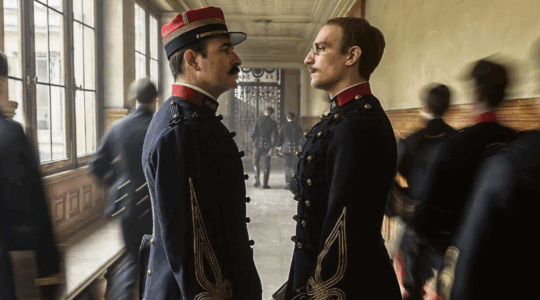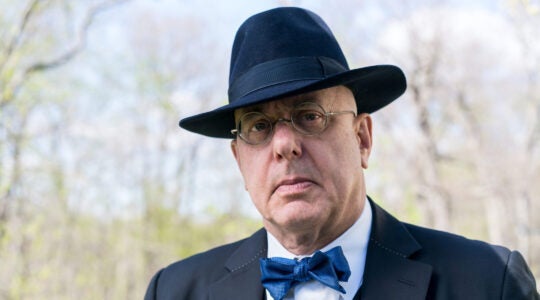Most rabbis want to stop the conversations in shul. I want to start one.
Eight years ago I presented a paper at the Orthodox Forum in Yeshiva University arguing that Modern Orthodoxy was suffering from a lack of passion. My contention was not that the Modern Orthodox community lacked Jews who were passionate, but that they lacked a passion for Modern Orthodoxy.
In fact, passion for Modern Orthodoxy was so rare that I wondered aloud whether we’d even know what it looked like if we saw it. Was it the college student who alternated evenings between the particle physics lab and the beit midrash? The lawyer who did Daf Yomi every morning and read Kierkegaard every night? Perhaps it was the teen who was equally excited by Tosafot and Titian. Whatever it was, it was rare.
This void of passion for Modern Orthodoxy, I argued, resulted from a lack of a coherent ideology. That, in turn, stemmed from the absence of what Jim Collins, the best-selling business author, calls a Hedgehog Concept: something (in this case, an authentic Torah value) that the Modern Orthodox community believed it did better than anyone else in the world. A quick look at other Orthodox sub-denominations suggested that each has a Hedgehog: the yeshiva world has Torah learning, Chabad has outreach, the Religious Zionist community has the mitzvah of settling Israel. Modern Orthodoxy, though, has none. And, while some might argue that Torah U’Madda — the synthesis of Torah learning with secular wisdom and culture — is that Hedgehog, the fact remains that Torah U’Madda inspires only a small segment of the community’s intellectual elite, and is actualized by even fewer.
When I first raised the Hedgehog problem almost a decade ago, it was an attempt to explain the “defections” from Modern Orthodoxy which parents were seeing both to the left and to the right. In its 2017 study, “Profile of the American Modern Orthodox Jew,” the Nishma research group corroborated this sense of communal instability when it found that 23 percent of self-defining Modern Orthodox Jews reported having become “less observant” over the previous decade and 39 percent who reported having become “more observant.” Perhaps even more to the point was that one-third of adults reported that their children were less observant than they were, while another third reported that their children were more observant. The center seemed to be eroding.
My initial argument, therefore, was that the lack of a Hedgehog was leading a younger generation elsewhere to find more coherent, more consistent, and more spiritually satisfying pastures.
In the years that have passed, I have presented this basic thesis numerous times in talks given across the country. In doing so, two critical points emerged. The first is that the lack of a Modern Orthodox Hedgehog may also help explain the near schism-like rupture created in recent years by the issues surrounding women’s participation in Orthodox synagogue life. Nishma’s study found that the two most burning issues on the minds of Modern Orthodox Jews across the spectrum today are the role of women and the community’s approach to the LGBTQ community. Orthodox rabbis on all sides of these debates agree that the LGBTQ issue raises far weightier halachic challenges than does the issue of women’s roles. One therefore might not have imagined that it would be the former issue that would nearly fracture what might be the smallest sub-denomination of the smallest denomination of the smallest of the world’s major religions.
The lack of a Hedgehog Concept might explain, though, why what might have been a crack in the surface of the Modern Orthodox community has instead become a chasm. In addition, for a sizeable portion of the Modern Orthodox community, the issue of women’s participation in Orthodox synagogue ritual has become their Hedgehog Concept. Integrating women in a halachically acceptable way is what they believe Modern Orthodoxy can — and ought — to do better than anyone else in the world. It is the cause toward which they orient, borrowing Collins’ phrase, all of their community’s resource engines. Unlike the call to Torah U’Madda, this call tugs on the heartstrings and incites passion. It is the stuff of which movements are made.
So if the lack of a Hedgehog is the problem, what’s the solution?
This week I published the first of two parts of my answer on The Lehrhaus.com. In it, I refer to the concept of Or Amim — the notion that from its inception, one of Judaism’s most sacred duties has been to share a set of ideas with society at large. These ideas are found in the stories of the Bible and in the exhortations of the Prophets; in the values that undergird contemporary halacha and in the ethics that have defined time-honored Hashkafa (philosophical worldview); in the complexities of Talmudic debate and in the cacophony of rabbinic commentary; in the punctilious practice of a lifestyle that is thousands of years old and in the veneration of traditions that reach back across the centuries.
The Modern Orthodox community, embedded within that society and firmly committed to that lifestyle, are uniquely equipped to fulfill this Divine mandate. This could be our Hedgehog Concept.
This is not a call for tikkun olam or social justice. Nor is it a suggestion that the “technicalities” of Orthodox observance are mere external trappings for the ideas that they reflect. It is an argument that the Jewish People are charged with a mission to share the richness of its unique way of life beyond the four cubits of its own community. And that revitalizing that charge, placing it at the core of our children’s worldview, may just provide the spark and the energy to rekindle the Modern Orthodox flame.
Much like the idea of Or Amim itself, my goal is not to convince, but to converse. I want to see the Modern Orthodox community ask itself — in shuls and in schools, on Facebook pages and in WhatsApp chats, in the yeshivot and seminaries of Israel and in the classrooms, board rooms, and batei medrash of New York — whether we have a Hedgehog Concept, do we need one, and how it might be brought about.
There is no doubt that the journey from conversation to action will be fraught with obstacles at every turn. But whatever the destination may be, we won’t get there if we don’t begin somewhere.
So let the conversation begin.
Rabbi Dr. Gil S. Perl is the head of school of Kohelet Yeshiva in Merion Station, Pa.
The New York Jewish Week brings you the stories behind the headlines, keeping you connected to Jewish life in New York. Help sustain the reporting you trust by donating today.




